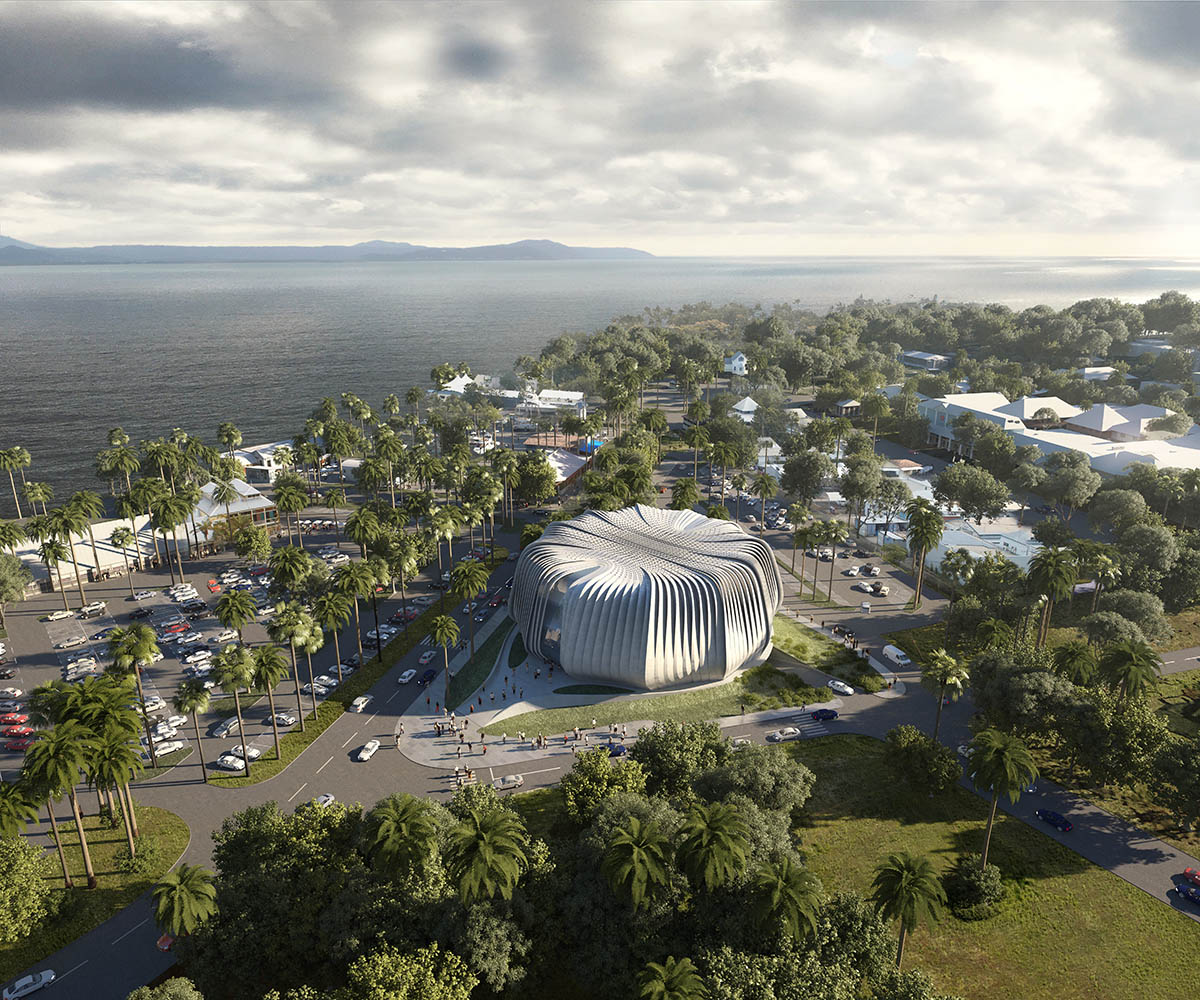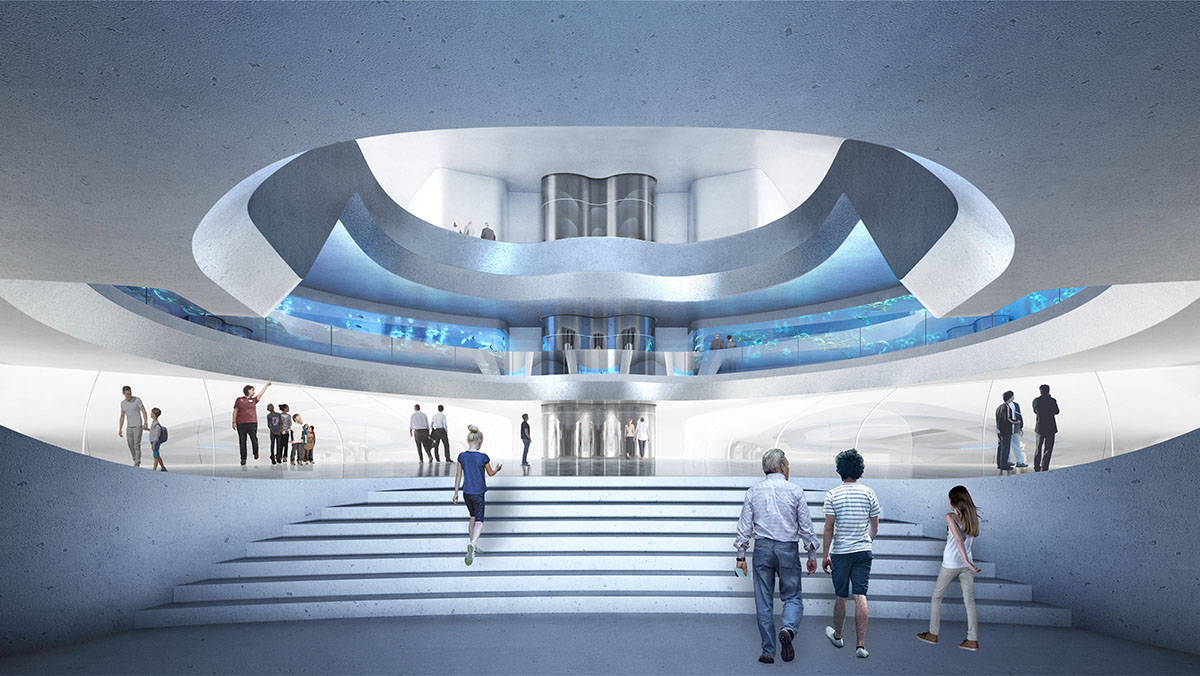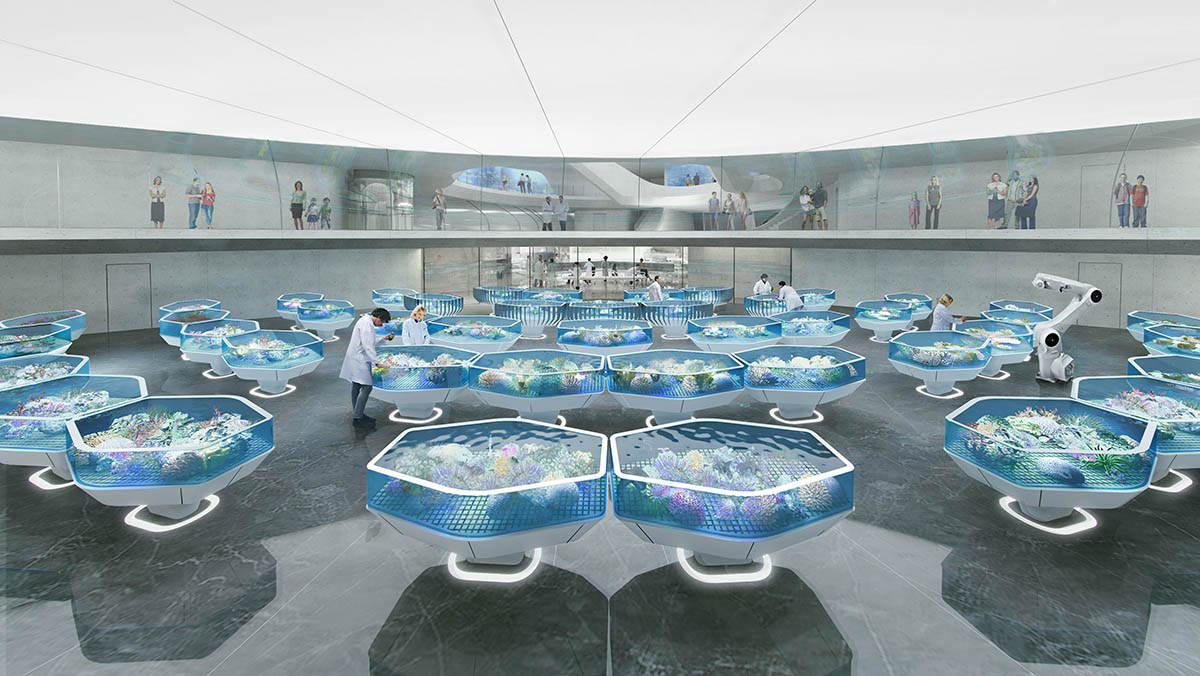Submitted by WA Contents
Contreras Earl Architecture plans "world's first dedicated coral conservation facility" in Australia
Australia Architecture News - Nov 02, 2020 - 12:43 7982 views

Australian architecture practice Contreras Earl Architecture together with leading engineering and sustainability consultants Arup and Werner Sobekfor the Great Barrier Reef Legacy, have unveiled the "world’s first dedicated coral conservation facility", the new building will be located at the gateway to the Great Barrier Reef in Port Douglas, North Queensland, Australia.
Called The Living Coral Biobank, the new facility aims to secure the long-term future and biodiversity of corals worldwide which are under severe threat due to climate change.
Proposed as a new typology - a "living ark", the primary goal of the facility is to keep alive and nurture over 800 species of the world’s hard corals. It will be the only dedicated facility of its kind in the world.
Through its innovative design and engineering it will be a world leader in next-generation renewable energy design, creating optimal conditions for coral storage while minimising energy consumption and solar gain.

"The Living Coral Biobank is the only project that can secure the living biodiversity of the world’s coral species immediately," said Dr Dean Miller, Living Coral Biobank Project Director and Managing Director of Great Barrier Reef Legacy.
"To ensure this priceless living collection is held in perpetuity for generations to come we need the world’s most advanced facility that also promises to use only renewable energy sources and function with optimum efficiency, while also creating an unforgettable visitor experience - and that’s exactly what this design delivers!."
"This project brings with it a profound responsibility to consider the impact of architecture and the construction industry on the natural world," said Rafael Contreras, co-founder of Contreras Earl Architecture (CEA).
"As one of the world’s major contributors of CO2 emissions and associated climate change, it is essential that the construction industry be encouraged by architects towards carbon neutrality."
"The Living Coral Biobank is an opportunity to set a global benchmark for sustainable outcomes and zero-carbon goals as well as creating a world-leading conservation and education facility. The ambition for this project is to create a beacon for environmental awareness – a centre of hope, learning and wonder," Contreras added.

While the corals will be the primary building user, the 6,830-square-metre multi-function centre will also host exhibition areas, an auditorium and classrooms as well as advanced research and laboratory facilities over four levels.
Providing an important education resource for Port Douglas, the wider region and specialists worldwide, the Living Coral Biobank will enable visitors to get up close to live specimens in aquarium displays, learn about coral ecosystems through exhibitions and events, and observe coral husbandry experts going about their daily work in a protected wet lab environment. In addition, the facility will also have a unique 200-person function space.
The building’s sculptural form is inspired by the ‘mushroom’ coral – a hard coral identified by distinctive protective radial fins. The Living Coral Biobank’s facade is conceived as a series of organic undulating concrete fins clustered closely at ground level to offer protection from adverse tropical conditions including threats of flood.
As they progress upwards the fins twist and unfurl, allowing natural light and ventilation of the upper levels while providing solar shading. The fins pull apart progressively towards Level 4 to provide a culminating visitor experience of a naturally-lit exhibition and education space.
The morphology also responds to the need to conserve the corals at lower building levels in a highly controlled environment as well as the requirement for biosecurity to prevent cross-contamination.

Contreras Earl Architecture is collaborating with Arup and Werner Sobek to integrate a holistic sustainable strategy that reduces energy consumption by tactically dividing the building into six compatible climate zones over four levels, with adjacencies minimising energy resource use for climatic control. Aspiring to the biosystems of the coral reefs themselves, the building will aim to be self-sufficient and carbon neutral.
The experience begins at the entry plaza – a terraced forum space, providing transition space from the humid tropical heat of surrounding landscaped gardens and continues via a grand stair to the Level 2 Central Viewing Platform, from where visitors can observe the wet lab specimen tanks in a protected environment below.
Public spaces across the building’s main levels are visually connected through a central atrium, with the illumination generating a surreal atmosphere through the building’s levels much like the depths of the sea.
At lower levels brightness and colour is introduced through reflections from the wet lab tanks, while cool light emanates from aquarium tanks positioned on Level 3. The fluorescence of the corals also contributes to the experience. Guests attending evening weddings and conferences will be surrounded by glowing coral species in the only function space of its kind.
The Living Coral Biobank resonates with Contreras Earl Architecture’s belief that sustainability should inform every design decision – from concept through to the choice of materials and details and onwards to construction processes.
The design strives to emulate the exactness of nature where nothing is random but every characteristic has a specific purpose. It is responsive to context, climate, the user and its function to protect 800 species of coral.
Project facts
Project name: The Living Coral Biobank
Location: North Queensland, Australia
Architect: Contreras Earl Architecture
Client: Great Barrier Reef Legacy
Engineer and Sustainability Consultant: Arup
Façade Consultant: Werner Sobek
All images © Contreras Earl Architecture / SAN architectural illustration
